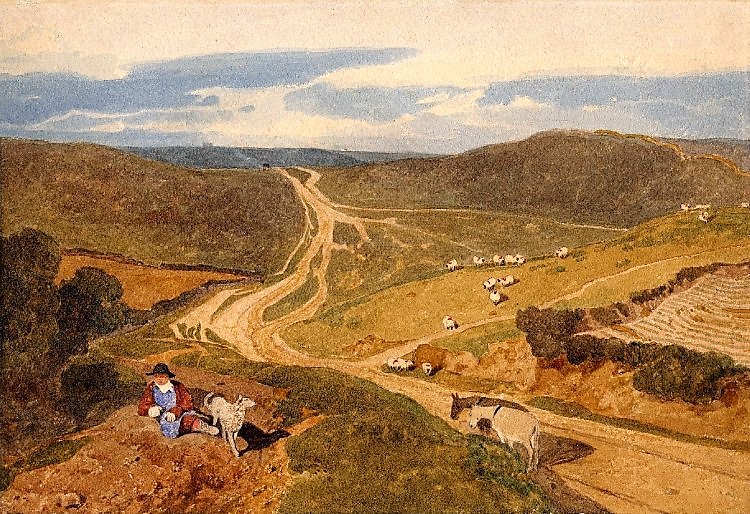Cotman, Aubrey, and the Neglected Places

with guest speaker Prof. Peter Davidson (Oxford)
Monday 27 November

In November 2023, for the first research seminar of our new project ‘Pioneers of Local Thinking, 1740-1820’, we welcomed Prof. Peter Davidson to Birmingham for a discussion of John Sell Cotman and John Aubrey. Peter is Senior Research Fellow in Renaissance and Baroque Studies and Curator of the Campion Hall Collection in Oxford. He has authored monographs on the verse of Richard Fanshawe and Robert Southwell, as well a trio of acclaimed texts on landscape art: The Idea of North (2005), Distance and Memory (2013) and a cultural history of twilight The Last of the Light (2015).
Tracing a rich and rangy seam of placethinking, Peter discussed Aubrey’s drawings of his own house (made in 1670 prior to his permanent departure from the area), particularly his set of views of undramatic slopes and ends of fields. These are places which carry the same all-but-secret autobiographical meaning as the views of underbrush and shadowed streams which John Sell Cotman made in the course of his northern tour in 1805. Peter cast back through these English expressions of place to the wider context of Dutch paintings of ordinary time in ordinary corners, and forward to consider their qualities in relation to Wordsworthian romanticism.
Watch the recording of this talk below and read on for a summary.
We were the lucky passengers on Peter’s breath-taking journey through the English countryside, to Aberdeen, then Leiden and the Low Countries, followed by a foray into the Claudian scenes of the Grand tour, and a return to Aubery’s locality in the home counties. Through these composite views Peter shared his account of
“how we see landscape starting through that curious bringing together of north and south”.
On Aubrey’s book of drawings created with the use of a perspective machine in around 1669, Peter noted that they are ‘Place-time-weather specific, mostly dated as late April evenings’. This form of landscape, intensely personal responses to his immediate surroundings, appears as if from nowhere: the sources from which Aubrey could have learned this mode of representing landscape are limited to a very limited number of Dutch prints:
“he’s looking for a way of talking about the place and what it meant to him […] aesthetically there is no precedent”
Peter went on to describe how Aubrey suffered a ‘grievously interrupted education’ due to the Civil War, and he reads these drawings in light of Aubrey’s wistful longing for continuity and his intellectual preoccupation with archaeology, deep time and comparative anthropology, then in vogue amongst his Oxford circle.
Turning next to the dialogue-in-landscape between the landscapists of the Dutch Golden Age and the Norwich School of watercolourists, Peter’s unique way of seeing offers a stream of revelations: we catch Cotman red handed borrowing from Vermeer’s textural attention of brick, pointing, and the flaking render of buildings; we see a visual rhyme between Cotman’s Crambe Beck Bridge (1804) and the rhymical sunlit expanses of Gerrit Berckheyde’s The Golden Bend in the Heerengracht (1671); and we find John Crome joining ‘his master’ Hobbema in newfound uses of water to articulate the local specificity of light and shadow.
Peter ends on the absence of a conclusion. But through these endlessly allusive and deeply felt connections he comes full circle to his thesis of picturing place as an autobiographical tool. Looking with Cotman at a forgotten, formally irresolvable slip of land, On the Greta. he guides us to a moving understanding of how landscape gave shape, colour, and form to lives in the long eighteenth century.